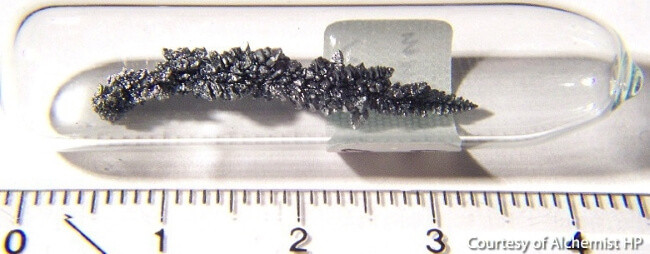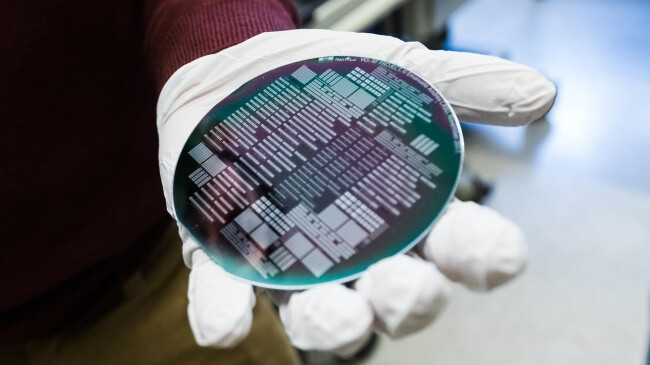Conducting Electricity Without Heat Using VO₂ Technology
| 08-01-2020 | By Philip Spurgeon

Key Takeaways:
- Vanadium dioxide (VO₂) defies the Wiedemann–Franz law by conducting electricity without generating waste heat.
- Its ability to switch from an insulator to a metal at 67°C opens the door to more efficient, cooler electronics.
- Applications range from smart windows and wearable tech to exosuits and space systems—reducing energy demand and improving safety.
- Widespread use of VO₂ could significantly lower global power consumption and help combat climate change.
The Wiedemann–Franz law states that good conductors of electricity also tend to be good conductors of heat. This is why traditional light bulbs often serve as better heaters than they do sources of illumination.
The apparent inevitability of this law has long shaped the design of motorised and electrical devices, making cooling a crucial consideration. It's why appliances like food processors can get hot quickly, and why fans in PCs can sound like jet engines during intensive tasks.
Most of the time, this heat can be managed with air vents and fans. However, the more intensive the task, the greater the cooling requirement. Server farms, for example, produce vast amounts of heat and require extensive cooling systems to prevent catastrophic failures.
In more extreme environments, such as space, managing heat is one of the biggest challenges of manned exploration. Excess heat can trap astronauts in life-threatening conditions or lead to uncontrollable fires in zero gravity.
Even propulsion systems must strike a delicate balance between weight, thrust, efficiency, and cooling. While liquid cooling and venting can offset waste heat, these methods have limitations—limiting the progression of technology itself. A better solution is needed.
Vanadium Dioxide
Vanadium dioxide (VO2) is an inorganic, dark blue compound with a unique property—it undergoes a phase transition close to room temperature.
VO2 can block infrared light (and thus heat) without affecting visible light. In practical terms, it reflects heat while remaining transparent—ideal for smart windows in cars, aircraft, and increasingly, homes.
As climate change pushes global temperatures higher, materials that can deflect heat without blocking light will be essential. Moreover, if reflected heat could be harvested—perhaps via integrated solar collectors—such windows might help power our homes.
If homes become partially self-powered, this reduces dependence on fossil fuels—turning a preventative material into a sustainable energy solution.
But VO2’s most fascinating property isn’t its heat-blocking capability—it’s that it can transition from an insulator to a conductive metal at just 67°C.
Compared to aluminium, which melts at over 600°C, vanadium dioxide is cheaper and more energy-efficient to manufacture.

Vanadium Dioxide
Credit: UNCTV
Future of Conductive Technology
VO2’s real breakthrough lies in its ability to conduct electricity without generating waste heat—completely defying the Wiedemann-Franz law.
This solves one of the biggest inefficiencies in electronics: the need to dissipate heat. Nearly every device today creates waste heat that must be vented or cooled, adding cost, complexity, and power draw.
Eliminating waste heat means lighter, cheaper, and more efficient devices. Gaming PCs wouldn’t need elaborate cooling systems, and server farms could be built anywhere—no need for cold climates or underwater installations.

Vanadium Oxide Circuit Board
Credit: EPFL
The potential benefits extend to space exploration, where risk reduction is crucial. Removing waste heat simplifies design, improves safety, and increases freedom in system layout.
Wearable technologies could also see a leap forward. Without the risk of overheating, thinner and more flexible devices become possible—true smart clothing combining VO2 with thread-based transistors could offer full functionality safely embedded in fabric.
Defence applications are equally exciting. Powered exosuits, long dreamt of in military circles, have always been hindered by power and cooling demands. VO2 dramatically reduces both—making efficient and lighter systems feasible. While it may still sound like science fiction, powered armour could become battlefield reality within the next two decades.
The Impact on Climate Change
Incorporating VO2 into electronics would drastically reduce the amount of heat released into the environment. Lower cooling needs mean lower energy use, resulting in a significant drop in global power consumption.
With fewer components and reduced power requirements, manufacturing becomes more sustainable. The carbon footprint per device decreases—lower raw material use, reduced energy consumption, and higher overall efficiency.
Additionally, because server farms no longer require cold environments or massive air conditioning systems, they can be built where space and infrastructure already exist.
The environmental benefits are clear. Lower CO2 emissions at a time of climate crisis make VO2 an important tool in the fight for a sustainable future.
While vanadium dioxide won’t single-handedly solve the world’s environmental issues, its potential to reduce waste heat, power demand, and resource use—while enabling new technological breakthroughs—makes it a critical step in the right direction.

